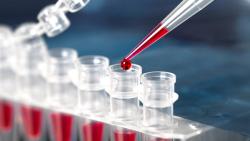
OR WAIT null SECS
- About Us
- Advertise
- Editorial Information
- Contact Us
- Do Not Sell My Personal Information
- Privacy Policy
- Terms and Conditions
© 2024 MJH Life Sciences™ and BioPharm International. All rights reserved.
Biosimilars Overcome Legal and Analytical Hurdles
A Supreme Court decision and improvements in analytical processes may speed the biosimilar approval process.
Although FDA has approved only five biosimilars applications to date, dozens more are in development or awaiting agency action, and a number of legal and scientific roadblocks are being overcome. An important Supreme Court decision in June promises to reduce patent disputes that have threatened to delay when new biosimilars come to market. In clarifying that the “patent dance” does not require biosimilar makers to wait an extra six months after FDA approval to distribute a new product, the unanimous ruling should help overcome delays in future biosimilar sales.
Interchangeable products are on the horizon, moreover, following FDA publication of draft guidance in January 2017 that spells out recommended testing and development of such products. Innovator and biosimilar makers alike have raised numerous questions about how FDA defines switching studies, labeling recommendations, use of foreign reference products, and other key terms, but agency officials say they expect to see interchangeable biosimilars on the market within the next two years, or even sooner.
And concerns that patients would experience harmful immune responses from similar biotech therapies appear to be unfounded. After 10 years of marketing biosimilars in the European Union, drug monitoring systems have not identified “any relevant difference in the nature, severity or frequency of adverse effects” between biosimilars and their reference products, reported Niklas Ekman, senior researcher at the Finnish Medicine Agency, at the recent PDA/FDA Biosimilars Conference in Bethesda, Md.
The European Medicines Agency (EMA) and FDA aim to encourage biosimilar development through further clarification of testing criteria and processes. Its positive experience with biosimilars, said Ekman, is prompting a shift from a more conservative approach on clinical testing requirements to an increased emphasis on the use of pharmacodynamic markers, in vitro models and analytical characterization to support approvals.
FDA analysts continue to emphasize the importance of analytical tools to fully characterize a new biological molecule and identify those attributes that may matter to patients. Sufficient risk assessment of quality attributes can reduce residual uncertainty about biosimilarity and indicate whether additional testing may be needed, explained Steven Kozlowski, director of the Office of Biotechnology Products in FDA’s Center for Drug Evaluation and Research. The agency expects to issue draft guidance “soon” on statistical approaches to the evaluation of analytical similarity data to further clarify its recommended approaches for documenting similarity in more complex products and for demonstrating fingerprint-like similarity.
One cloud over the program, though, is the potential for manufacturing issues to block new product approval. Last week, FDA issued a surprise rejection of Pfizer’s biosimilar version of Epogen (epoetin alfa) due to violations and quality issues at its production facility in Kansas operated by its Hospira subsidiary. In May, an FDA advisory committee voted overwhelmingly to approve the new copycat product initially developed by Hospira. But instead FDA sent Pfizer a complete response letter citing unresolved problems at the fill-finish plant.



